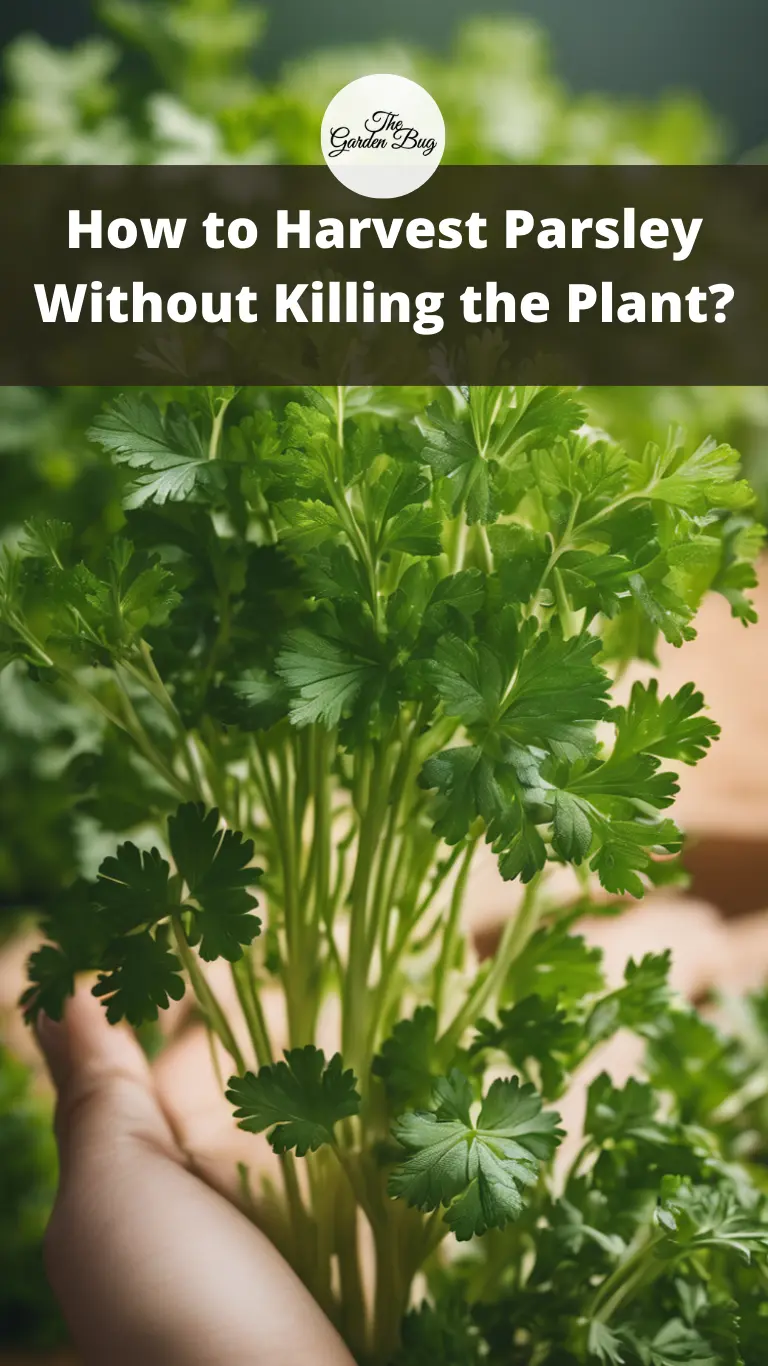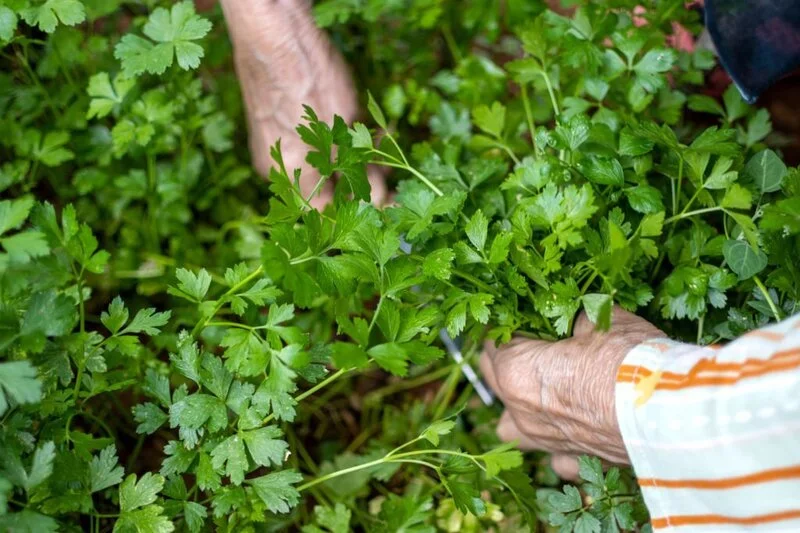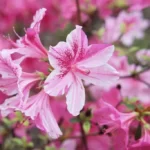Today, we’re going to talk about a garden gem that’s a staple in kitchens all around the world – the humble parsley. Not only is parsley a flavorful addition to various dishes, but it’s also a rich source of vitamins and minerals. But, here’s the kicker: How can you enjoy a bountiful harvest without damaging this aromatic herb? Don’t worry, we’ve got your back! In this article, we’re going to unveil the secrets to harvesting parsley without killing the plant. So, stick with us and let’s turn you into a parsley-pro!
- Easy to grow
- Flat, green leaves are easy to chop
- Garden use: Containers, flower & herb beds
- Culinary use: Garnish, seasoning, salads, palate cleanser
- Plant in full sun to partial shade for the best yields
Understanding the Parsley Plant
Before we dive into the art of harvesting, it’s essential to get to know our green friend a bit better. Parsley is a biennial plant, meaning it completes its life cycle in two years. In the first year, it grows the leafy greens we’re all familiar with, and in the second year, it blossoms and produces seeds before it dies off.
Parsley plants are quite sturdy and can thrive in different conditions, but they’re at their best in a spot with full to partial sun and well-drained soil. One fascinating fact about parsley is that the more you harvest it, the more it grows, making it a gift that keeps on giving! Understanding this will help you get a generous harvest without harming the plant. Up next, we’ll talk about the perfect time to start your parsley harvest. Stay tuned!
When to Harvest Parsley
Now that we’re more familiar with our leafy companion, it’s time to answer a critical question: when is the best time to harvest parsley? In general, parsley is usually ready for its first harvest 70 to 90 days after planting, when the leaf stems have three segments. By this time, the plant is mature enough to withstand a little trimming.
As a rule of thumb, the best time to pick your parsley is early in the morning, just after the dew has dried. Why, you ask? Well, this is when the plant’s oils, which give it its distinct flavor and aroma, are at their peak. Harvesting your parsley shouldn’t be a one-time event. Instead, it should be done regularly to encourage new growth and to keep the plant bushy and productive.
Tools Needed for Harvesting Parsley
Alright, it’s time to gear up! Harvesting parsley doesn’t require fancy or specialized tools. In fact, a simple pair of garden scissors or pruners will do the job. Remember, it’s crucial to ensure that your tools are clean and sharp. Dirty or dull tools can damage your plants and make them susceptible to diseases.
- 【Make Pruning Work Easier】Rust-resistant stainless steel blade are sharp and Long-Lasting for easy and smooth cut.Anti-slip and ergonomic handle make the gardener clippers more comfortable in your hand.Easy-open spring action reduces hand fatigue while cutting. you can easily to cut without damaging the vital stems and branches of your plants.
- 【User-friendly Safety Lock】These garden shears have locking mechanisms to keep the sharp blades securely closed when not in use.It is easy to maneuver and can effectively reduce accidental injuries. And the closing mechanism is firmly enough, you don’t need to worry the plant pruning shears will get locked accidentally during use.
- 【Garden Gloves for Hand Protection】One size fits most. This Gardening gloves,made of soft & comfortable cotton fabric,can protect yourself from dirt, skin wounds and nasty splinters when doing yard chores. The grip latex coating provides anti-slip or sure control when grabbing garden & yard tools.
- 【Widely used】This gardening shears set comes with 3 different blades for a variety of general pruning tasks.It is ideal for harvesting or trimming herbs,flowers,house plants, hydroponics,bonsai,cutting stems or light branches,or other cutting needs in the garden. It would also be a perfect gift for a gardening friend.
- 【After Sales Service】 Reliable Customer Support. Please feel free to tell us if you have any questions about our garden shears pruning. Note:Keeping your pruner shears cleaned and well-oiled can extend their lifespan.Please dry and clean it after use.✅Note: The colors of the garden pruners and gloves will be shipped at random.✅
But here’s the important part: Always use gloves when handling scissors or pruners. Safety should always come first, folks! Also, have a basket or bag ready to hold your freshly harvested parsley. It’s as simple as that! Stay tuned as we dive into the step-by-step guide on how to harvest parsley without killing the plant.
Step-by-Step Guide on How to Harvest Parsley without Killing the Plant
Alright, it’s showtime! Let’s walk through the process of harvesting parsley without causing harm to the plant.
- Identify the mature stems: Start by looking for stems that have three segments. This is a good sign that the stem is mature enough to be harvested.
- Cut at the base: Using your clean, sharp scissors or pruners, cut the selected stem at the base, close to the ground. Remember to cut at an angle – this prevents water from collecting at the cut end, which could cause rot.
- Don’t overdo it: Only harvest about one-third of the plant at a time. This ensures that the plant has enough foliage left for photosynthesis, promoting more growth.
- Regular harvesting: Make a habit of regular harvesting. It encourages the growth of new stems and leaves and keeps the plant producing throughout the season.
Aftercare Post-Harvest
Once you’ve gathered your lush, fragrant parsley harvest, the work isn’t over. Proper aftercare is crucial to ensure your parsley plant stays healthy and ready for future harvests.
- Water the plant: After harvesting, give your plant a nice drink of water. This helps the plant recover and stimulates new growth.
- Check for pests or diseases: Post-harvest is a great time to inspect your plant for any signs of pests or disease. If you find any, treat it accordingly.
- Keep the soil nourished: A couple of weeks after harvesting, consider adding a layer of compost or a gentle organic fertilizer around the base of the plant. This helps replenish any nutrients that have been used up during growth.
Remember, the key to a healthy and productive parsley plant is regular, mindful care. Happy harvesting, folks!
Common Mistakes to Avoid While Harvesting Parsley
As we reach the end of our parsley journey, let’s look at some common pitfalls you should steer clear of to maintain a happy and productive parsley plant:
- Not harvesting regularly: One of the biggest mistakes you can make is not harvesting your parsley plant regularly. This can lead to leggy plants and reduced productivity.
- Harvesting too much at once: Remember, your parsley plant needs its leaves for photosynthesis, which fuels growth. Avoid taking more than a third of the plant at a time.
- Improper cutting technique: Avoid tearing the stems or leaves as it can stress the plant and lead to disease. Always use sharp and clean tools and make gentle cuts at the base of the stem.
Conclusion
There you have it, folks – your guide to harvesting parsley without hurting the plant. With the right techniques, a dash of patience, and a sprinkling of care, you can enjoy a steady supply of this aromatic herb right from your garden. Not only will you add a flavor punch to your dishes, but you’ll also have the satisfaction of knowing it came from your own green thumbs. So go ahead, harvest away!







